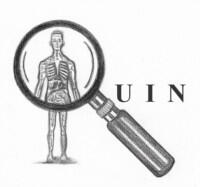Ureteropelvic junction obstruction (UPJO) is an impairment of urine flow from the renal pelvis into the proximal ureter and is the most common cause of hydronephrosis in neonates. This disorder is detected in up to 7% of all maternal ultrasound scans, and an estimated 10% of these newborns have hydronephrosis, which, if left untreated, may result in early failure of functional renal development in these patients.
While the current reference standard, nuclear renography (MAG3), yields useful diagnostic information, it is invasive, slow, and does not offer anatomic detail due to the low resolution of the imaging. It also delivers potentially harmful ionizing radiation to teh patient. Thus, there is an unmet need to develop a method for functional imaging of kidneys that is non-invasive, safe, accurate, reproducible and radiation-free.
This study has two primary objectives. First, to develop advanced methods of motion-compensated, high spatial and temporal resolution magnetic resonance imaging (MRI) for the improved quantification of the glomerular filtration rate (GFR), an important marker of renal function. Second, to demonstrate the superiority of this method over the current reference standard, nuclear renography (MAG3).
